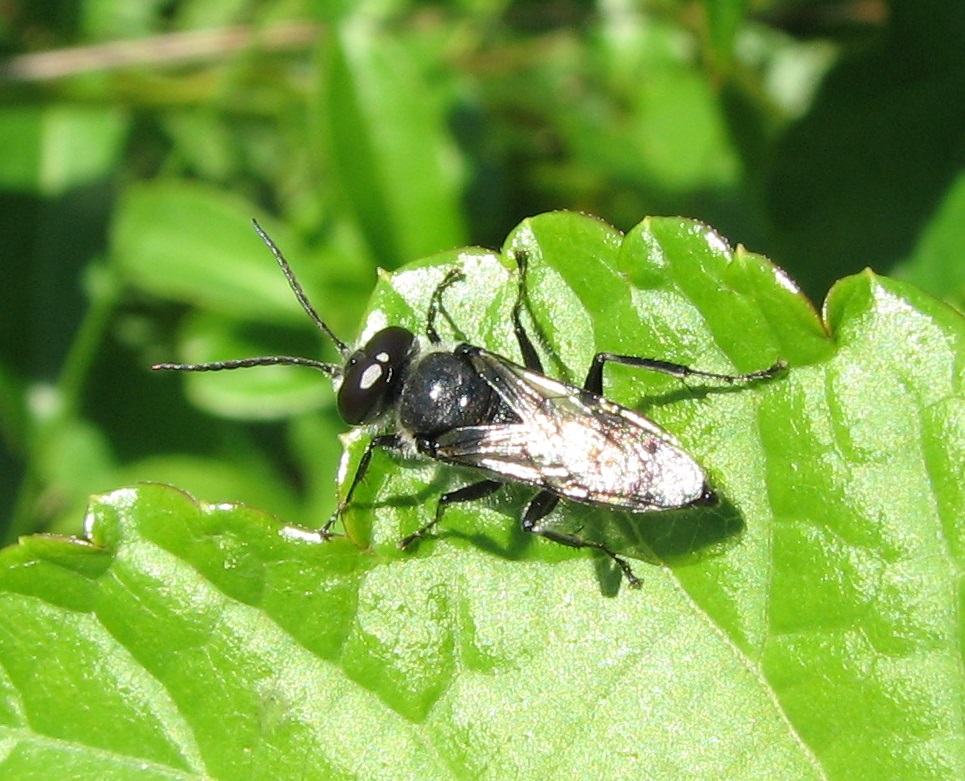|
Stizus Fasciatus
''Stizus fasciatus'' is a species of sand wasps belonging to the family Crabronidae. Description ''Stizus fasciatus'' can reach a length of .Bohart, R. M. & Menke, A. S. Sphecid Wasps of the World: a Generic Revision. — Berkeley: Univ. California Press, 1976.. — 695 p. Head and thorax are black, while the abdomen shows yellow and black bands. Wings are darkened. Biology Adults can be found in June and August. Females build a nest with several cells in the sandy soil. Then they lay eggs on the body of paralyzed grasshoppers. Distribution and habitat This species can be found in most of southern Europe, in North Africa and in the Near East up to China (Russia, France, Spain, Italy, Croatia, Montenegro, Serbia, Greece, Romania, Bulgaria, Cyprus, Ukraine, Turkey, Israel, Kazakhstan, Uzbekistan, Turkmenistan, Tajikistan, Iran, Mongolia, China, Morocco, Algeria, Egypt). These wasps prefers xerophytic areas. References Crabronidae Fauna of Ukraine Arthropods of Israel I ... [...More Info...] [...Related Items...] OR: [Wikipedia] [Google] [Baidu] |
Johan Christian Fabricius
Johan Christian Fabricius (7 January 1745 – 3 March 1808) was a Danish zoology, zoologist, specialising in "Insecta", which at that time included all arthropods: insects, arachnids, crustaceans and others. He was a student of Carl Linnaeus, and is considered one of the most important entomologists of the 18th century, having named nearly 10,000 species of animals, and established the basis for the modern insect Biological classification, classification. Biography Johan Christian Fabricius was born on 7 January 1745 at Tønder in the Duchy of Schleswig, where his father was a doctor. He studied at the gymnasium (school), gymnasium at Altona, Hamburg, Altona and entered the University of Copenhagen in 1762. Later the same year he travelled together with his friend and relative Johan Zoëga to Uppsala University, Uppsala, where he studied under Carl Linnaeus for two years. On his return, he started work on his , which was finally published in 1775. Throughout this time, he remaine ... [...More Info...] [...Related Items...] OR: [Wikipedia] [Google] [Baidu] |
Global Biodiversity Information Facility
The Global Biodiversity Information Facility (GBIF) is an international organisation that focuses on making scientific data on biodiversity available via the Internet using web services. The data are provided by many institutions from around the world; GBIF's information architecture makes these data accessible and searchable through a single portal. Data available through the GBIF portal are primarily distribution data on plants, animals, fungi, and microbes for the world, and scientific names data. The mission of the GBIF is to facilitate free and open access to biodiversity data worldwide to underpin sustainable development. Priorities, with an emphasis on promoting participation and working through partners, include mobilising biodiversity data, developing protocols and standards to ensure scientific integrity and interoperability, building an informatics architecture to allow the interlinking of diverse data types from disparate sources, promoting capacity building and ca ... [...More Info...] [...Related Items...] OR: [Wikipedia] [Google] [Baidu] |
Crabronidae
The Crabronidae are a large paraphyletic group (nominally a family) of wasps, including nearly all of the species formerly comprising the now-defunct superfamily Sphecoidea. It collectively includes well over 200 genera, containing well over 9000 species. Crabronids were originally a part of Sphecidae, but the latter name is now restricted to a separate family based on what was once the subfamily Sphecinae. Several of the subfamilies of Crabronidae are often treated as families in their own right, as is true of the most recent phylogenies (example below). Phylogeny This phylogenetic tree is based on Sann ''et al.'', 2018, which used phylogenomics to demonstrate that both the bees (Anthophila) and the Sphecidae arose from within the former Crabronidae, which is therefore paraphyletic, and which they suggested should be split into several families; the former family Heterogynaidae nests within the Bembicidae, as here defined. These findings differ in several details from st ... [...More Info...] [...Related Items...] OR: [Wikipedia] [Google] [Baidu] |
Fauna Of Ukraine
The wildlife of Ukraine consists of its diverse fauna, flora and funga. The reported fauna consists of 45,000 species when including the areas of the Black Sea and the Sea of Azov. Ukraine's protected environments consist of 33 Ramsar sites covering an area of . Biosphere nature reserves and three national parks are all part of the GEF projects portfolio of conservation of biodiversity in the Danube Delta. Their vegetation pattern is mixed forest area, forest-steppe area, steppe area, Ukrainian Carpathian Mountains and Crimean Mountains. Some of the protected areas that were reserves or parks are subsumed under the biosphere reserves. The isolated or abandoned zone caused by the Chornobyl nuclear power station disaster around the city of Chornobyl, while evacuated of all human habitation, has an abundance of wildlife which is reported to be increasing. However, reports indicate that bird's brains are 5% smaller, and the insect and spider population is in decline. Geograph ... [...More Info...] [...Related Items...] OR: [Wikipedia] [Google] [Baidu] |
Arthropods Of Israel
Arthropods (, (gen. ποδός)) are invertebrate animals with an exoskeleton, a segmented body, and paired jointed appendages. Arthropods form the phylum Arthropoda. They are distinguished by their jointed limbs and cuticle made of chitin, often mineralised with calcium carbonate. The arthropod body plan consists of segments, each with a pair of appendages. Arthropods are bilaterally symmetrical and their body possesses an external skeleton. In order to keep growing, they must go through stages of moulting, a process by which they shed their exoskeleton to reveal a new one. Some species have wings. They are an extremely diverse group, with up to 10 million species. The haemocoel, an arthropod's internal cavity, through which its haemolymph – analogue of blood – circulates, accommodates its interior organs; it has an open circulatory system. Like their exteriors, the internal organs of arthropods are generally built of repeated segments. Their nervous system is "ladder- ... [...More Info...] [...Related Items...] OR: [Wikipedia] [Google] [Baidu] |


